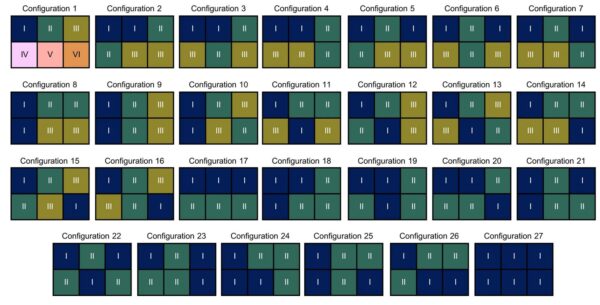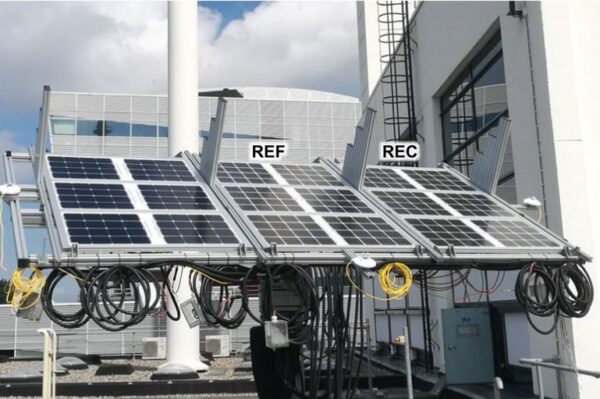From pv magazine Global
A group of researchers at the Netherlands’ Delft University of Technology (TU Delft) has developed a new design for reconfigurable PV modules that can reportedly provide a 10% higher energy yield than conventional shade-resilient PV panels with fixed interconnections and six bypass diodes in partial shading scenarios.
“Typically, a reconfigurable PV module consists of two or more blocks of solar cells that are connected to a switching matrix,” the scientists explained. “The switching matrix can dynamically modify the electrical interconnections between the blocks according to the illumination conditions and maximise the module’s output power.”
In the study “Electrical performance of a fully reconfigurable series-parallel photovoltaic module,” published in nature communications, the research group said their work represents the first attempt to validate reconfigurable modules using prototypes installed under realistic operating conditions.
The academics implemented switching matrix with MOSFETs, which they said allows the module to adopt 27 different series-parallel electrical configurations. These are classified as s1p6, s2p3, s3p2 and s6p1, with the first number indicating how many blocks are connected in series forming a string, and the second number indicating how many strings of series-connected blocks are connected in parallel.

The scientists said they could identify the best module configuration by considering illumination conditions via a synchronous reconfiguration algorithm, which measures the short-circuit current of the six blocks of cells.
“When the PV module is uniformly illuminated, configuration s6p1 is chosen since it delivers the lowest current and minimises Joule losses,” they explained. “On the other hand, when the PV module becomes partially shaded, configurations with parallel interconnected blocks will be chosen to reduce current mismatch losses.”
The team compared the performance of a prototype reconfigurable panel with that of a reference panel with fixed interconnections for four months under different shading conditions. “Different bar lengths were used to progressively shade and unshade the blocks during sunrise and sunset,” it said.

The tests showed that, without any shading, the reference panel produced 1.9% more energy than the reconfigurable module due to additional resistive losses in the latter’s switching matrix. By contrast, the reconfigurable PV module produced from 4.8% to 13.7% more power than the reference panel under shading conditions, and a higher average yield of 10.2%.
The group specified that the yield of the reconfigurable module doesn’t include energy consumed by the switching matrix and the sensing circuitry.”
“During all the shading experiments, about 40% of the energy was delivered by the s1p6 configuration, in which all six blocks of cells are connected in parallel,” the researchers stated.” Although the s1p6 is the most shading tolerant of the 27 possible configurations, it is also the one that generates the highest currents and thus may lead to the highest losses at system level.”
Looking forward, they said they want to test asynchronous algorithms and utilize a microcontroller in the smart junction box.
This content is protected by copyright and may not be reused. If you want to cooperate with us and would like to reuse some of our content, please contact: editors@pv-magazine.com.








By submitting this form you agree to pv magazine using your data for the purposes of publishing your comment.
Your personal data will only be disclosed or otherwise transmitted to third parties for the purposes of spam filtering or if this is necessary for technical maintenance of the website. Any other transfer to third parties will not take place unless this is justified on the basis of applicable data protection regulations or if pv magazine is legally obliged to do so.
You may revoke this consent at any time with effect for the future, in which case your personal data will be deleted immediately. Otherwise, your data will be deleted if pv magazine has processed your request or the purpose of data storage is fulfilled.
Further information on data privacy can be found in our Data Protection Policy.